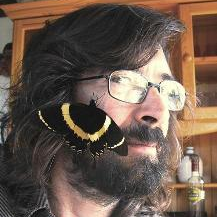Diversity in 2022
A special issue of Diversity (ISSN 1424-2818).
Deadline for manuscript submissions: closed (31 December 2022) | Viewed by 111228
Special Issue Editors
Interests: phytochemistry; molecular pharmacology of medicinal and toxic plants; alkaloids; evolution; chemical ecology; ornithology; phylogeny and evolution
Special Issues, Collections and Topics in MDPI journals
Interests: molecular evolution; dynamic of communities and populations; plant–insect interactions, ecology; tools: mitochondrial DNA; ISSR; cuticular hydrocarbons; field ecology; model organisms: lepidoptera; diptera; spiders
Special Issues, Collections and Topics in MDPI journals
Interests: plant systematics; plant taxonomy; Apiaceae (Umbelliferae); Fabaceae (Leguminosae); chemosystematics; useful plants; medicinal plants; ethnobotany
Special Issues, Collections and Topics in MDPI journals
2. Muséum National d’Histoire Naturelle, Institut Systématique, Evolution, Biodiversité (ISYEB), UMR 7205, CNRS, Sorbonne Université, EPHE, Université des Antilles, 75241 Paris, France
Interests: genotype-phenotype interactions; phenotypic diversity; sexual selection; metapopulation biology; dispersal; migration; adaptive radiation; coevolution
Special Issues, Collections and Topics in MDPI journals
Special Issue Information
Dear Colleagues,
This Special Issue is a collection of high-quality papers in open access form written by our Editorial Board Members, previous authors and reviewers, and researchers invited by the Editorial Board Members and the Editorial Office. Authors can submit their manuscripts using the Manuscript Tracking System at https://susy.mdpi.com/user/manuscripts/upload?journal=diversity.
Prof. Dr. Michael Wink
Dr. Luc Legal
Prof. Dr. Ben-Erik Van Wyk
Prof. Dr. Michel Baguette
Guest Editors
Manuscript Submission Information
Manuscripts should be submitted online at www.mdpi.com by registering and logging in to this website. Once you are registered, click here to go to the submission form. Manuscripts can be submitted until the deadline. All submissions that pass pre-check are peer-reviewed. Accepted papers will be published continuously in the journal (as soon as accepted) and will be listed together on the special issue website. Research articles, review articles as well as short communications are invited. For planned papers, a title and short abstract (about 100 words) can be sent to the Editorial Office for announcement on this website.
Submitted manuscripts should not have been published previously, nor be under consideration for publication elsewhere (except conference proceedings papers). All manuscripts are thoroughly refereed through a single-blind peer-review process. A guide for authors and other relevant information for submission of manuscripts is available on the Instructions for Authors page. Diversity is an international peer-reviewed open access monthly journal published by MDPI.
Please visit the Instructions for Authors page before submitting a manuscript. The Article Processing Charge (APC) for publication in this open access journal is 2600 CHF (Swiss Francs). Submitted papers should be well formatted and use good English. Authors may use MDPI's English editing service prior to publication or during author revisions.








